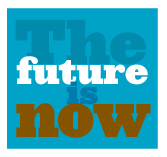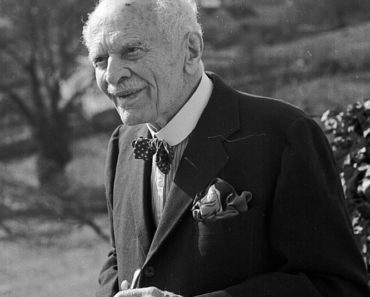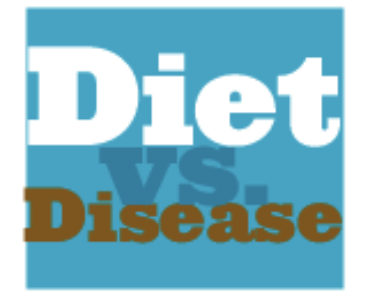As evidenced in the 2016 election cycle, more Americans than ever before are consuming their news online.
Six out of every 10 adults say that they receive their news from social media sites. Even that number seems like it might be low. If you stumble around on Facebook or Twitter long enough, you can’t help but receive some news, whether or not that was your intended purpose.
 At the same time, social media sites are optimized to keep you there for as long as possible. They make money by showing you ads. What’s the best way to keep you on site? By showing you the type of content you’ve already told them you love.
At the same time, social media sites are optimized to keep you there for as long as possible. They make money by showing you ads. What’s the best way to keep you on site? By showing you the type of content you’ve already told them you love.
When you like a Facebook post it goes into an algorithm that helps the platform determine what post you see next. We also have the ability to further optimize our feed by unfollowing those who post things that don’t align with our perspective. (This feature can admittedly help our peace of mind, but it also sends us deeper into political division.)
In short, it’s easy to wind up with an optimized version of your newsfeed that is wholly unbalanced and largely composed of hyper-partisan commentary. We can build fortresses of solitude within our side of the ever-deepening political divide. While company in numbers can largely feel good, it can also give you a skewed perspective of the American landscape and a distortion on what the facts actually are.
“Everyone is entitled to his own opinion, but not his own facts.” – Daniel Patrick Moynihan
These words rang true when Moynihan uttered them decades ago, but what is an accepted fact gets skewed in an environment such as the one above. We can insulate ourselves from the other side, allowing for contentious discourse.
There are political events occurring on a nearly daily basis in the U.S. that deserve our attention. Some deserve a sharper reaction than others. But in order to have intelligent discussions about them, we need to understand and separate fact from utter fiction. And there are plenty of both out there.
Most of us only see news that conforms to our worldview instead of expanding it. Many of us lack the ability to think critically about what we consume. This is truly counterproductive to any productive, intelligent discourse.
How to Fight Your Position in a News Silo
Understand the Difference Between News and Commentary
This seems like it should be easy, but it is something that many struggle with. If there is an opinion attached, it’s commentary. Sean Hannity, Rachel Maddow and Joe Scarborough all produce commentary. They evaluate their facts to form political opinion.
Taking commentary as gospel deepens the divide. This is why it’s crucial to understand what you are consuming. More people are lining up along partisan divides before they understand the issue, and then seeking out only the material that reaffirms their stance. While commentary is enticing, straight news is based in facts and allows us to educate ourselves and then come to our own conclusions.
|
Taking commentary as gospel deepens the divide. This is why it’s crucial to understand what you are consuming. More people are lining up along partisan divides before they understand the issue, and then seeking out only the material that reaffirms their stance.
|
Understand What Fake News Really Is
Some 82 percent of middle school students could not distinguish between real stories and advertisements labeled “Sponsored Stories” on the bottom of news websites, according to a Stanford University study.
This is not to mention false or biased information, deceptive advertising and misleading political posts. While schools are busy cutting back on librarian positions, basic research skills are overlooked.
A chart made its rounds last year as part of the election cycle that broke down various news outlets by their bias. Some will certainly disagree with the breakdown, but it should at least give you an idea of where your news is coming from, and what constitutes a quality news source.
As you post or consume news on Facebook and other social media sites, understand how the source plays into the coverage. You may also want to confirm the news story with a mainstream media outlet.
There are various projects and efforts such as this one, to combat fake news online. The best thing you can do is educate yourself, and improve the quality of your media consumption.
Read More Books
There are many books out there that can provide proper historical context. Understanding the larger picture helps you put the events of today in context. Unplugging and reading more books has the added benefit of reducing your burnout.
That’s not all. Reading a book you might hate can expand your horizons. It can help you refine and adjust your values – a complicated endeavor in the echo chambers of social media.
Talk to People
Who are your real life friends that you disagree with politically? Why not go out for a coffee or beer and learn more about the beliefs on the opposite side of the aisle? It’s a great way to learn, and become a more well-rounded person.
The trick is that you are not there to convince the other person of the merits of your position. Instead, listen. You don’t have to agree with everything that is said, but at least you’ll be able to understand their perspective. This beats the impersonal and combative feel of a contentious Facebook post.
Conclusion
Some efforts are being made to curb the spread of fake news. But as media companies are able to gather more data based on user input, the insulation inside these silos will only get stronger. As long as the incentive for social media companies remains to keep users on site for as long as possible, these news silos will continue to be a problem.
It’s up to us to determine that we want a well-rounded perspective built outside our social media feeds. It’s up to us to learn how to apply critical thinking skills to the media we consume.
The future literally depends on it.
Matt Brennan is a marketing copywriter, occasional parenting writer, and journalist in the Chicago area. He is also the author of Write Right-Sell Now.
The post How to Fight a News Silo and Why it Matters appeared first on The Good Men Project.
(via The Good Men Project)







